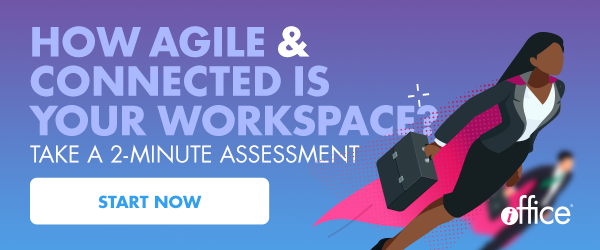Building a More Agile Workplace with Digital Dexterity


“Digital dexterity” is not just another technology buzzword — it’s the cornerstone to a modern digital workplace. And businesses that fail to make their workplace and workforce more nimble won’t be able to keep up with their competitors.
But what does it mean to be digitally dexterous? And how can a business accomplish digital dexterity? Read on to find out.
What Is Digital Dexterity?
According to Gartner analysts Matt Cain and Chris Howard, digital dexterity is a business strategy designed to encourage workforce agility and engagement by promoting employee autonomy and building a more consumerized work environment. Cain and Howard say the strategy empowers employees to make “discretionary contributions to business effectiveness.”
While that definition is thorough, it’s not exactly easy to digest. Here’s an easier way to think about it:
- The goal of digital dexterity is to build a flexible, agile workplace filled with a flexible, agile workforce that is invested in the success of the organization.
- To encourage employees to be enthusiastic about the future of the business, the employer must give the workforce what it needs to make meaningful contributions to the company.
- What employees need from their employer are:
- 1) greater freedom and autonomy in the workplace
- 2) intuitive, consumerized technology.
At the 2016 Gartner Digital Workplace Summit, Paul Miller, managing VP at Gartner, told attendees that if they’re working on the digital workplace, they are now in the B2C sphere. Rather than just implementing the technologies the IT department thinks the workforce needs, business leaders must treat their employees like consumers — in other words, ask them about their challenges, their goals and what technologies they believe are critical for success.
Whit Andrews, analyst and vice president at Gartner, sums this up quite well: “Consumer grade is the new industrial strength.”
How Do You Achieve Digital Dexterity?
Collaborate and coordinate. Because digital dexterity is a business strategy (and not simply a technical strategy), input is needed from the leaders from every department — accounting, human resources, legal, marketing, operations — not just the IT team. This ensures the voices of employees across the company are heard.
Be flexible. If you want to build a more agile business, the strategy you use to accomplish this must be dynamic and adaptable. Don’t design a strategy with strict steps and hard deadlines; instead, establish the most important milestones for your goals and reassess the strategy when those are reached.
Make data-driven decisions. Before you begin any new initiatives, set benchmarks for the business metrics that matter to your company — for example, productivity, employee engagement and efficiency. As you revise processes or implement new technologies, regularly check the progress in these areas. Then use this data to adjust the plan of action as necessary. There’s no sense in going all-in on a procedure or software if it isn’t producing the results you want.
Don’t let your competitors cross the finish line before you’ve even started the race. Start working on your digital dexterity strategy today.
Editor’s Note: This post was previously published on Inc.com and has been republished here with permission.
